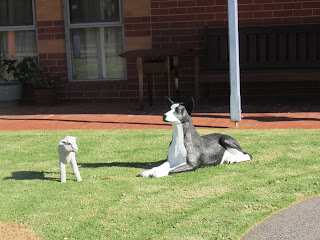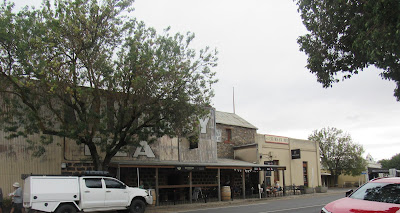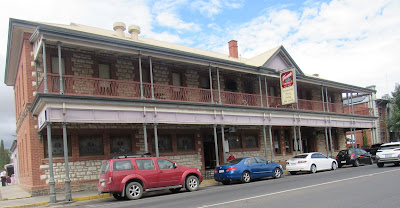On Friday 14 March we left for our next cricket holiday, this time in the Barossa Valley in South Australia. Robin was to play in a team named SilverAshes3Nil in the Barossa Valley Vintage Cricket Carnival.
Eight teams of veteran cricketers took part in the carnival. Each team was to play four matches during the week, weather permitting. It was also a chance to explore another part of Australia.We waited for the peak traffic period to finish before setting out on the first stage of the journey. The road was still very busy especially as we approached the city and the West Gate Bridge. Fortunately it was an easier drive once we reached the Western Highway. There were lots of trucks, including double trucks, on the road but we soon got used to them. Our first stop was at Beaufort, midway between Ballarat and Ararat. The Western Highway passes through the town. As we started to explore we kept seeing signs leading to the large, clean toilet block, next to the information centre, in the main street.
Across the road was a row of bakeries and cafes so we chose one to have an early lunch. It was very busy. On the highway we had seen many three wheeled motor bikes on the road. Each bike usually had an older rider and passenger and we later learned that they were meeting at Halls Gap for a gathering that weekend.Around the corner from the cafe was the fire brigade building.This signpost lists some of the many organisations to be found in Beaufort.After lunch we continued along the Western Highway to Nhill.






















































